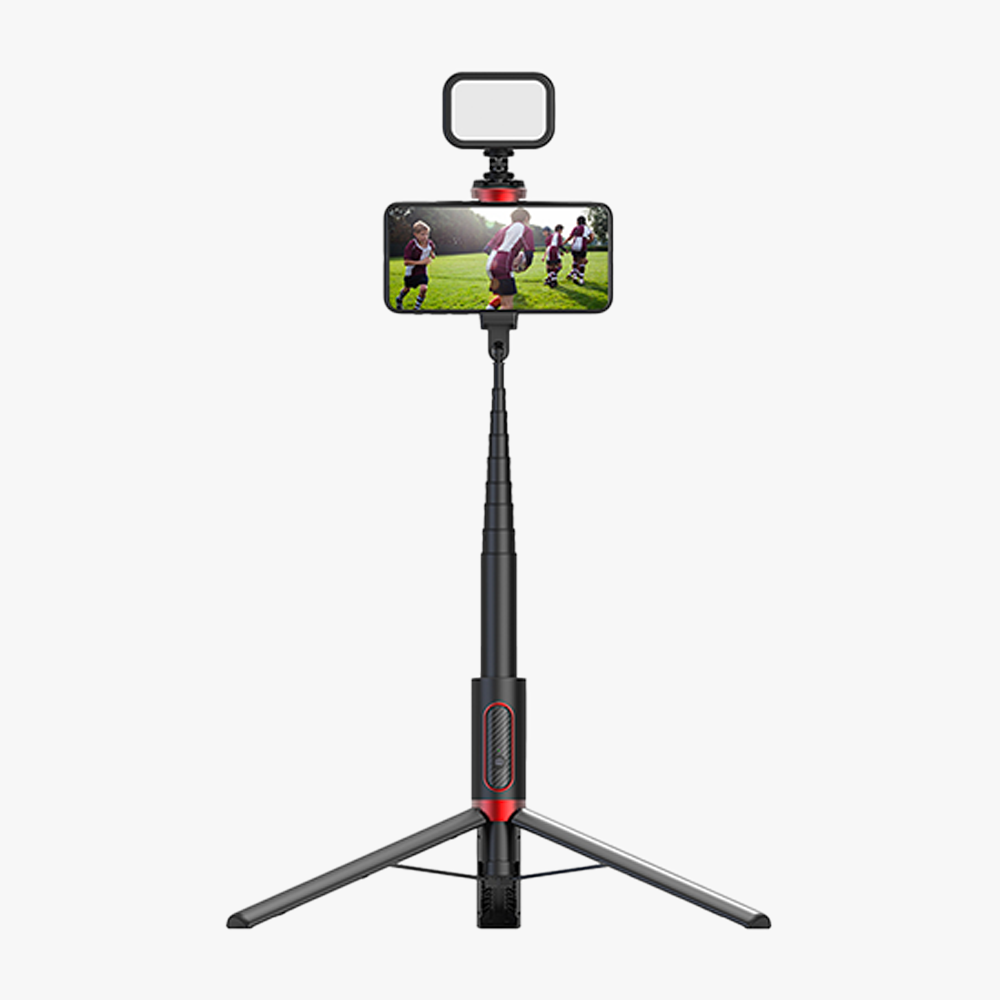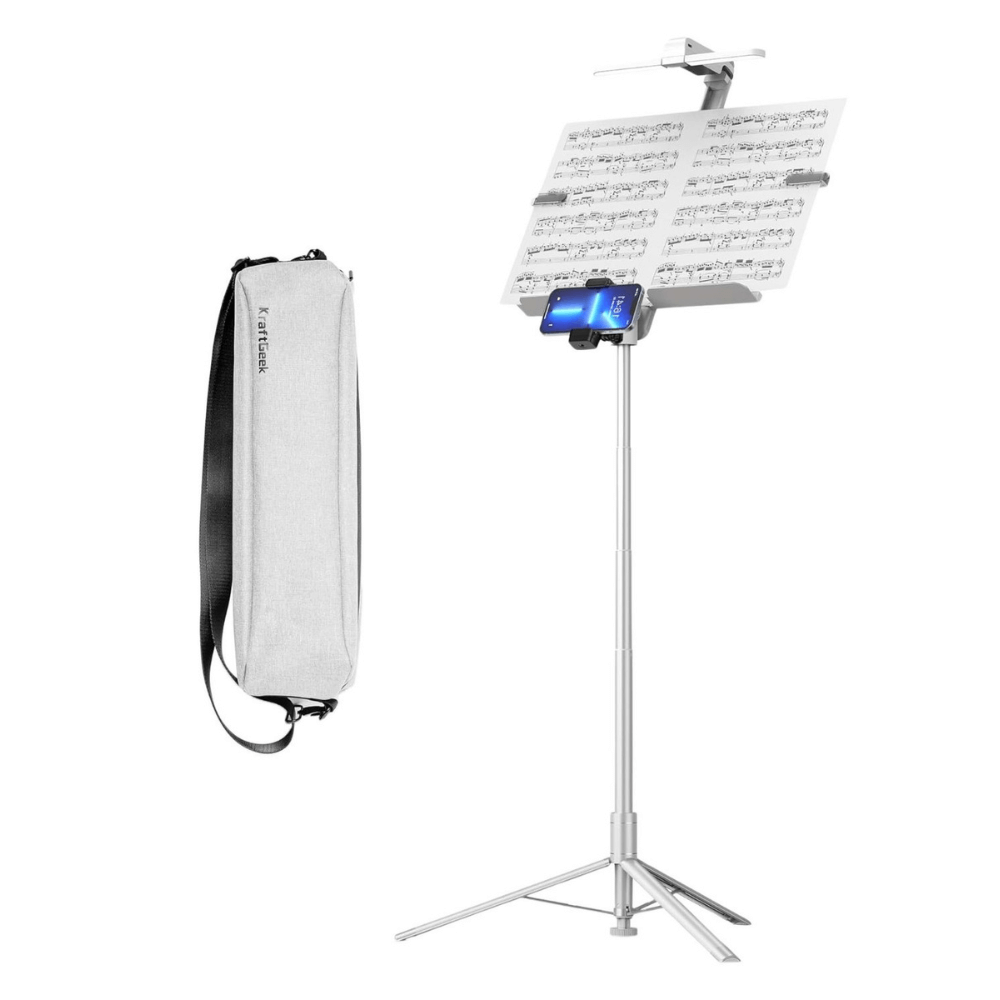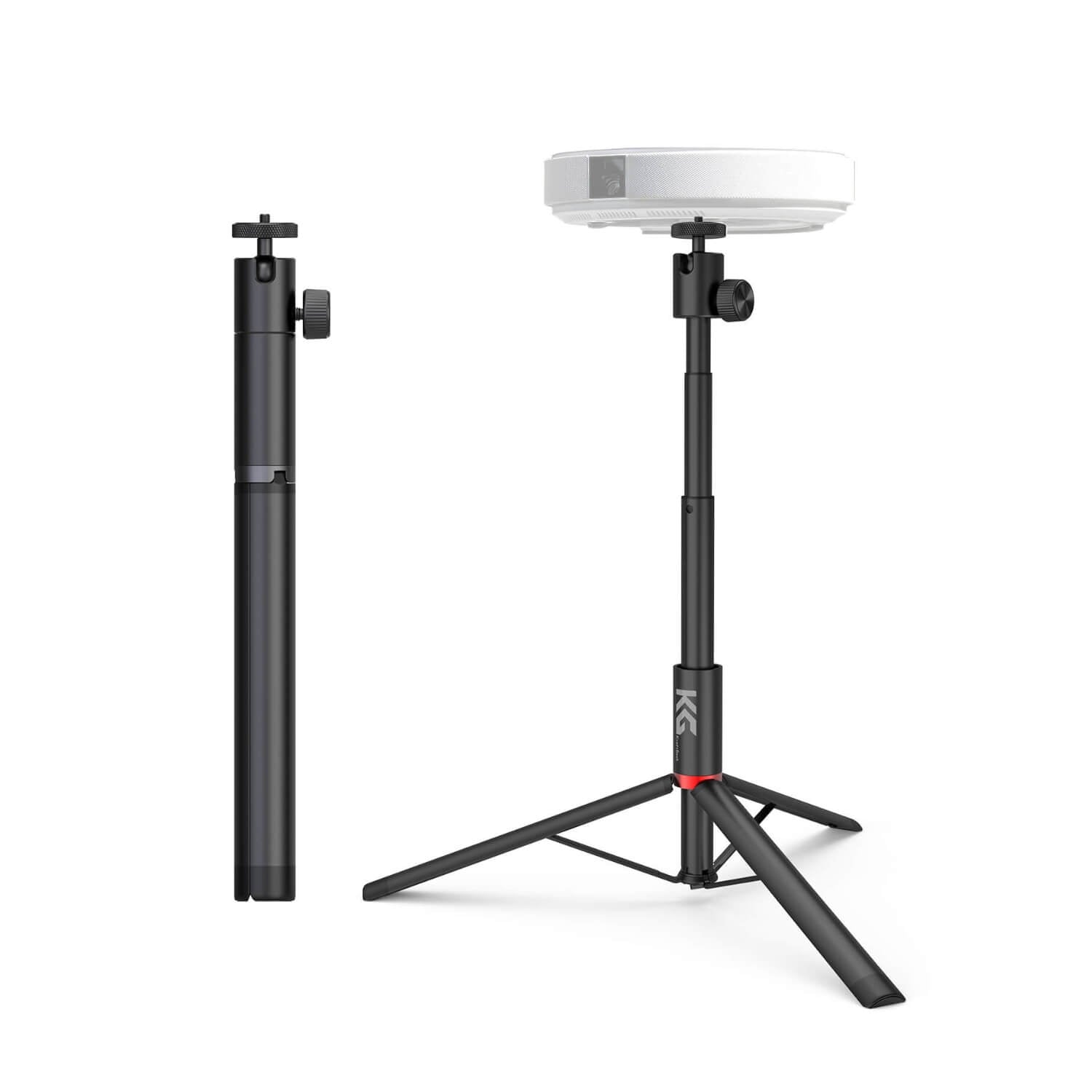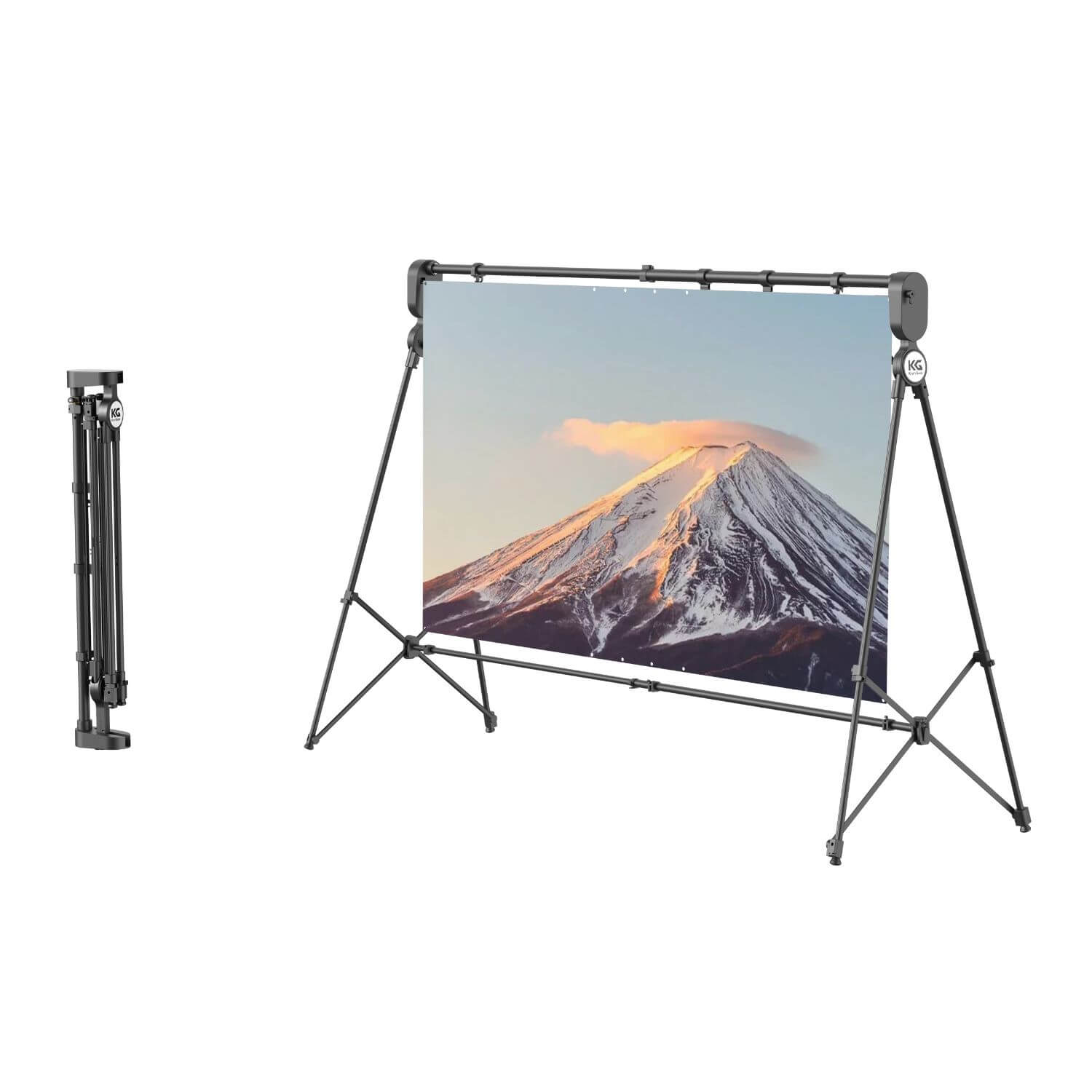Photography enthusiasts often struggle with the occasional guilt of not utilizing tripods to their full potential. The tripod, which stands apart even in the age of modern technology and handheld shooting in extreme low-light conditions, promises unsurpassed image quality, creative effects through long exposures, and immense potential for morphing diverse photographic genres.
Whether you are a beginner who is thinking of getting his or her first tripod or an advanced user looking out for the latest developments, this guide will assist you in mastering the art of tripod usage.
What Is A Tripod?
Tripods are one of the most important tools in photography; they provide a stable and solid platform used to support cameras, smartphones, or other imaging devices. It is created with the purpose of delivering photographers stability and accuracy that will allow them to get sharp and neat photos.
Tripods are multi-purpose which give variations for camera and phone photography as well as the tripod which works like an extension of a selfie stick. Understanding the basics of tripods is essential for any photographer seeking to enhance the quality of their images and explore various creative possibilities.
Why Use A Tripod?
Tripods offer unmatched stability, which reduces camera shake. This is especially essential in cases where longer exposures are required or when capturing detailed images in macro photography.
Though handhelds are convenient, tripod-based shots offer the photographer a low ISO option as well which produces superior images with lesser noise. This is particularly applicable in the case of shooting with high-resolution cameras.
A tripod requires a more measured and considered way of composition. It provides photographers the chance to set their pictures perfectly, producing images that are well-arranged and pleasing to the eyes.
How To Choose The Right Tripod
Choosing the ideal tripod is a huge decision for photographers since it defines the quality and versatility of their photography. Modern tripods come with all kinds of features and materials, which makes the selection process somewhat interesting but also can be confusing.
Here's a comprehensive guide to help you navigate the factors that matter when choosing the right tripod for your needs:
1. Weight Considerations
Weight is one of the most important aspects to consider in choosing a tripod. Fortunately, modern technology has resulted in smaller and more portable products. Knowing how you perceive portability and the kind of photography that you practice will help determine if whether to settle on carbon fiber and aluminum alloy options.
2. Material
The question of whether you are to go with carbon fiber or aluminum alloy will depend on your requirements. Lightweight and superior vibration dampening is what carbon fiber tripods are famous for. The high price is worth it for those who value portability and reduce vibrations. On the other hand, aluminum alloy offers an affordable alternative that includes additional weight.
3. Leg Sections and Locking Mechanisms
The number of leg sections impacts the folded length and ease of setup. While three-section legs were once standard, four or five-section models with twist or flip locks are now prevalent. Consider your preferences in terms of setup speed and portability.4. Leg Angles and Independent Adjustability
Explore tripods with legs that can be angled independently, a valuable feature when shooting on uneven terrain. This flexibility ensures stability and adaptability, especially in confined spaces where varying leg angles may be required.
5. Center Column Functionality
A center column that can be extended or angled provides added versatility, catering to photographers who engage in low-level shooting or macro photography. Prioritize stability by extending the legs before positioning the center column.
6. Tripod Feet
The best type of feet for hard surfaces are smooth rubber soles and spiked metal feet improve traction on rough ground. Other tripods have rubber feet with internal metal spikes, which proves to be a win-win situation.
7. Tripod Head
With a variety of options on the market, from ball heads to geared heads, choose based on your photography style. Ball heads are versatile and lightweight, while geared heads offer precision for architectural or macro work.

When To Use A Tripod?
Tripods themselves are not universal accessories; they adapt to different situations, thereby improving the quality of your photographic or film material. Here are several scenarios where the use of tripods proves invaluable:

1. Photography and Self-Portraits
For the best landscape photography, low light photography, or long exposure photographs, camera tripods help to create sharp images without blurs. A tripod ensures stability during self-portraits and group shots, allowing you to be in the frame without falling on another person for help.
2. Travel
There are tripods designed for traveling that are portable and convenient. As you go through cityscapes, capture national monuments and record moments from every travel adventure with a travel tripod that ensures stability without causing unnecessary bulk.
3. Vlogging
Vloggers often rely on the flexibility of phone tripods to capture their daily adventures. These tripods accommodate smartphones securely, allowing for stable video recording and ensuring your audience enjoys smooth, professional-looking content.
4. Gym and Fitness
Documenting your fitness journey or sharing workout routines requires a stable setup. Whether using a phone tripod for quick exercises or a camera tripod for more elaborate fitness sessions, these tools keep your recording equipment steady, resulting in clear and focused videos.
5. Remote Learning
In situations where remote learning involves practical skills, such as golf practice, a camera tripod becomes an essential tool. It ensures your camera remains fixed at the desired angle, allowing your remote teacher to provide precise feedback on your technique.
6. Night Photography and Light Painting
A camera tripod allows for long exposures without a camera shake, unveiling the magic of nocturnal landscapes and creative light trails.
Types of Tripods

1. Camera Tripods
Designed for traditional cameras, DSLRs, or mirrorless setups, camera tripods provide sturdy support for capturing stills, long exposures, and professional-quality shots. They often feature adjustable height and flexible leg configurations to accommodate different shooting scenarios.
2. Phone Tripods
These tripods are designed specifically to support smartphones and keep them steady for taking still pictures or making video recordings. Their small size makes them great for mobile content production.
3. Selfie Stick Tripods
The gap between a self-held and a stationary shot is bridged by the use of selfie stick tripods that combine both the flexibility provided by the sticks together with stability offered by tripods. However, these multi-tasking accessories are ideal for shooting action selfies, group pictures, or videos made by vloggers.
4. Travel Tripods
Travel tripods are designed with the traveling photographer in mind and focus on portability without sacrificing stability. These tripods are portable; they can be folded and fit into travel bags. Perfect for adventurers taking shots on the road or in harsh operating conditions.
5. Specialized Tripods
Some tripods are specialized such as tripods for low-level macro photography, tabletop tripods for mini set-ups, or heavy-duty tripods used in the professional field. These specialized options address niche requirements within the photography and videography spectrum.
Considerations When Using A Tripod In Photography
Although the advantages of tripod use are certain in photography, knowing several important factors improves shooting.
1. Stability
For heavier DSLRs and telephoto lenses, choose a solid camera tripod that will be able to handle the weight of your gear. Look for models featuring robust construction, anti-twist leg locks, and a sturdy center column to ensure you maintain unshakeable stability even during long shoots.
2. Adaptability
Get creative angles through the phone tripod that is easy to maneuver. Choose tripods with adjustable ball heads or multi-angle locking mechanisms, which allow you to shoot from various angles, such as a low-point composition or flyover.
3. Environment
Vloggers exploring different locations should choose selfie stick tripods with feet suitable for varied environments. The ability to switch between rubber and spiked feet ensures stability whether you're vlogging in an urban setting or capturing scenic views in nature.
4. Portability
Travel photographers often seek a balance between stability and portability. Consider lightweight camera tripods with a compact folded length, making them easy to carry in your backpack without compromising essential features.
5. Compatibility with Accessories
Smartphone photographers can amplify their creativity with compatible accessories. Check if your chosen phone tripod accommodates additional lenses, external microphones, or remote shutter releases, expanding the range of shots you can capture.
Product Recommendations
Conclusion
Whether you’re a seasoned professional or an enthusiastic newcomer to photography, keep the factors discussed in this guide in mind which can help you find the best tripod for your needs- whether it is that of nature photography, macro shots, or creative videography.










